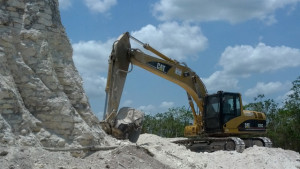 In a recent report by the World Wildlife Fund (WWF), the organization reports that at least 114 of 229, close to half, of world heritage sites of outstanding importance for species and habitats are now being threatened by industrial development, mining and other activities.
In a recent report by the World Wildlife Fund (WWF), the organization reports that at least 114 of 229, close to half, of world heritage sites of outstanding importance for species and habitats are now being threatened by industrial development, mining and other activities.
These sites include Australia’s Great Barrier Reef, the Grand Canyon in the US, and China’s giant panda sanctuaries in Szechuan among many others. These sites are all supposed to be protected under the United Nations’ designated world heritage status. But encroachments from industries, including fossil fuel exploration and illegal logging, are threatening to destroy the valuable habitats, the conservation charity WWF said on Wednesday, April 6th, 2016.
World heritage sites fall under three categories: cultural, natural and mixed. “Natural” heritage refers to sites with outstanding physical, biological and geological formations, including the habitats of threatened species of animals and plants, and areas with scientific, conservation or aesthetic value. On the other hand, Cultural heritage refers to monuments, groups of buildings and sites with historical, aesthetic, archaeological, scientific, ethnological or anthropological value. However, many sites hold qualities that give them what is called “Mixed heritage”, referring to sites which include both cultural and natural criteria.
According to UNESCO’s criteria, there are currently 229 designated world heritage sites with natural “outstanding universal value”. Currently, 197 are solely natural sites, and 32 are mixed, displaying both natural advantages and cultural input. These two designations account for more than a fifth of all UNESCO world heritage sites, the others being mainly human constructions, such as Venice.
The Guardian Newspaper reports that the critics have suggested that the UN has not done enough to ensure the protection of the many sites that it designates as worthy of special conservation. UNESCO world heritage status is a coveted accolade, but also confers responsibilities on the governments of the countries in charge of the sites.
The benefits of preserving such sites extend far beyond the boundaries of the areas under special protection, according to the report. It is clear that having a site designated as a Heritage site brings attention and tourism and with that comes Jobs in tourism and conservation. On the other hand the protected areas provide food, plants, water, medicine and other benefits to millions of people. One great example is the case of the Belize Barrier Reef, where the construction of buildings along the coast, accompanying clearance of the mangrove swamps – which provide a shelter against storm damage and erosion – are affecting the lives of 190,000 people, or about half the state’s population.
WWF is calling on governments to ban harmful industrial activities in designated world heritage sites and their surroundings, and calling on the international companies with interests in such areas to take responsibility.















